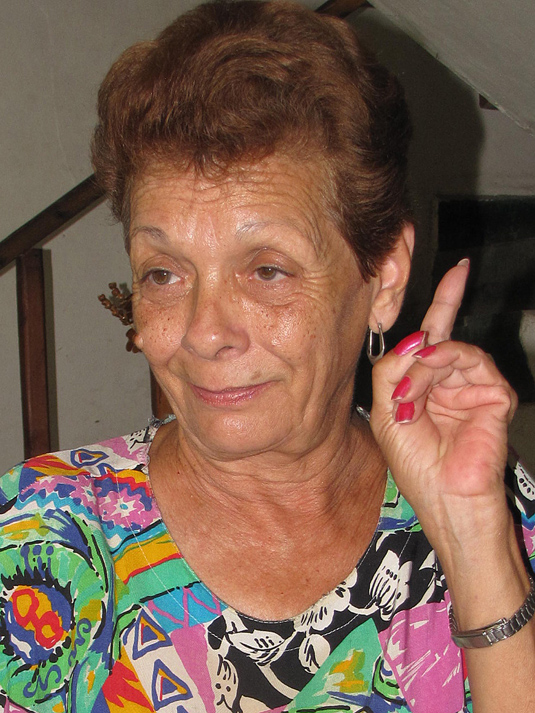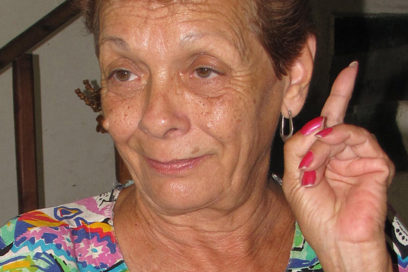
“At last we have arrived,” said Major General Maximo Gomez when on May20, 1902, the Cuban flag was hoisted after the US flag was lowered at the Fortress of the Tres Reyes del Morro (Three kings of Morro Castle).
His patriotic expression had to do with the hard battle started by the Cuban people on January 1, 1899 when the military occupation of Cuba was carried out by the US after they snatched the undoubtedly victory of the Liberation Army against the Spanish colony by a cruel and long struggle for independence.
With the goal to deepen on what represented to our national history May 20, 1902, we will interview Doctor in History Sciences Francisca Lopez Civeira, professor of the University of Havana and deputy president of the National Union of Cuban Historians (UNHIC).
What is the historical meaning of May 20, 1902?
May 20, 1902 has been qualified as a devil day. It is logic in certain period; because in a victorious revolution any time and in country, people spontaneously take the streets and they also break the system’s symbols down to establish the new ones.
It is like that, and May 20, 1902 was in an extent that great symbol of that republic which with the triumph of the Revolution was getting into a new period, and so people wanted to sweep all that resembled the opprobrious past.
“But later comes the time for reflection, even more in the field of historians, whose duty is make reflections so that we could understand the processes in the daily life of society, and with them build their historical speech.
“Then, while watching all the Cuban process which ended on May 20, 1902 with the constitution of the national State, it is necessary to ask why this was possible.
“If we review Paris Treaty, we see a difference in the treatment given to Cuba in relation to Philippines and Puerto Rico, Spanish territories that the US had a scenario of the Spanish-Cuban- American War. In the supposed treaty said that Spain resigned of its sovereignty over those territories and Guam Island and gave them to the US; while in relation to Cuba, but there will be no cession, but will be militarily occupied for its pacification.
“This difference had to do with the independent conflict taking place in Cuba, a pretext used by the US to declare the war to Spain and do it not only in this country but also in Philippines and Puerto Rico. But America was not the homogeny country is today, but an emerging power trying to have a space in the world, which had a committed established in the Joint Resolution, whose first article said that “The Cuban people is and has the right to be free and independent.”
“It was supposed that during the military occupation, the US will find the way do govern Cuba. In this way there were different positions in what to do, among them an annexationist which was very strong, and another that was in defense to find intermediate ways. When on December 1899, Leonard Wood, a great believer annexationist who substituted military governor John R. Brook, demonstrated annexation had gained in force. However, they were creating a national Cuban State with an appendix in the Constitution “the well known Platt Amendment” that is a political and legal instrument aim to guarantee certain possibilities of domination of Cuba.
Why was the annexation not done?
“I think it is necessary to value the situation of Cuba by then to answer your question. I believe it was not done because the Cuban people did not permit it. Of course, I am not talking of unanimities, but the majority who spontaneously, with neither organization nor a clear leadership demonstrated their will to get independence and establish a national State.”
How did they manifest that will?
“Every time they exhumed the remains of a Mambi combatant anywhere, the ceremony turned into a meeting where the majority reaffirmed their hope for independence. As part of the destruction of all that resembled the past like, the Spanish names of the streets and the parks were substituted by the heroes of the independence: Jose Marti, Carlos Manuel de Cespedes, Antonio Maceo, Calixto Garcia, Serafin Sanchez”, or the values: Republic, Independence, Freedom.
What does this tell us? It says the people were reaffirming the symbols and those are ways of resistance.
“Maximo Gomez’ entrance to Havana on February 24, 1899, a symbolic day, was tremendous. People called him the great liberator and said:
“We now have a republic.” That is, people made good use of all the moments to demonstrate the will of independence, so, Leonard Wood wrote in his reports that the occupation could be extended to get the annexation, other sources convinced the US government it would be impossible in a pacific way, but means of the force, and in that moment, that nation, which was in a resistance struggle in Philippines, was neither in real conditions to do it in both places at the same time, nor even less when Cuba had been the great symbol because they have fought for independence and the people had the right to be independent. This stopped them.
“When they decided to call for a Constituent Assembly, the military order issued with that purpose established that its members had the obligation to determine the relations between the US and Cuba, in the Constitution to be written and passed, and that the people called that the suspicious clause.
“Something that is not really taken into consideration is that this caused a tremendous reaction; protests were strong and intense. Why should appear in the Constitution the relations between the US and Cuba, even more if Cuba was occupied by the US?
The US was forced to use that terrible file that was the imposition of the Platt Amendment, which was included in its military budget so that they could say: there is an amendment here or there is no republic.
They could achieve their goal like this, but it was passed because the majority of the members of the assembly considered that the least bad thing was the republic.
May 20 was the result of s strategy with the purpose to make the invaders go away and the purpose was achieved.
Then, they had to leave and left a republic “with only one hand, with one eye and lamed,” as Dr. Sergio Aguirre, “but that could walk, see and limb, so it was not nonexistent”; a limited republic or hemiplegic according to Dr. Julio Le Riverend, its existence is thanks to the Cuban people, and we have to rescue that. We should understand and think about those Cubans who in an adverse situation were honorable and determined in the defense of their right for Cuba, and its national State.”
Acerca del autor
Graduada de Licenciatura en Periodismo, en 1972.
Trabajó en el Centro de Estudios de Historia Militar de las Fuerzas Armadas Revolucionarias (FAR), en el desaparecido periódico Bastión, y como editora en la Casa Editorial Verde Olivo, ambos también de las FAR. Actualmente se desempeña como reportera en el periódico Trabajadores.
Ha publicado varios libros en calidad de autora y otros como coautora.
Especializada en temas de la historia de Cuba y del movimiento sindical cubano.


